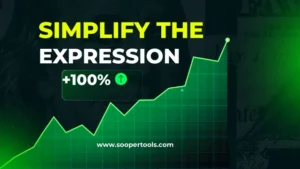Invisible Symbol Generator
Create and copy invisible characters for your social media profiles, usernames, and more
Generated Invisible Symbol
Your invisible symbol is ready (looks blank here):
Quick Characters:
About Invisible Symbols
What are invisible symbols?
Invisible symbols are special Unicode characters that appear as blank space in most applications. They have various uses in digital content.
Common uses:
- Creating blank social media profiles and usernames
- Formatting text without visible spaces
- Adding invisible separators in text
- Testing software and website input fields
- Creating invisible watermarks in documents
Important notes:
- Not all platforms support all invisible characters
- Some platforms may filter out certain invisible characters
- Use responsibly and ethically
- May not work in all applications or websites
Invisible Symbol Tool – Create Blank Names, Hidden Characters, and Empty Text
Invisible characters are special Unicode code points that show no visible glyph but still occupy space or act as text content. These characters are useful when you need a blank display name, want to separate elements without visible punctuation, or require an empty placeholder in forms and social profiles. The Invisible Symbol tool makes it easy to generate and copy the correct characters so you do not have to remember hexadecimal codes or search for them manually.
What is an invisible symbol and why it matters
An invisible symbol is a character that produces no visible mark when rendered, but it still exists in the underlying text. Developers, social media users, game players, and designers use these characters to create empty looking usernames, insert spacing that will not wrap, or prevent automatic trimming in forms. Unlike removing text entirely, inserting an invisible character preserves the field length and prevents the system from treating the entry as truly empty.
Common use cases
- Creating a blank display name on platforms that disallow empty names
- Adding hidden spacing in usernames for unique handles
- Using nonprinting characters as placeholders in templates
- Protecting layout by inserting invisible separators
How to use the tool
The tool offers a one-click copy function so you can generate the character you need and place it directly into a profile, game, or form. If you want a blank but valid username, select the character labeled for that scenario and paste it where required. The tool also explains which characters are accepted by common sites and which are likely to be sanitized or rejected.
Instagram and social media specifics
Social networks vary in how they handle invisible characters. For example, some platforms accept them for display names while others strip or normalize them. If you want to make a handle stand out, use the generator to produce an invisible symbol compatible with the target service and then test it in the profile editor to confirm persistence.
Table: Useful invisible characters and typical behavior
The table below lists commonly used invisible characters, their Unicode names, and typical site compatibility. Use it as a quick reference when you need a specific behavior.
| Character | Unicode Name | Typical Behavior |
|---|---|---|
| (zero-width space) | ZERO WIDTH SPACE (U+200B) | Invisible, often accepted; can allow line break points |
| (zero-width non-joiner) | ZERO WIDTH NON-JOINER (U+200C) | Prevents ligatures, useful in names or when joining is undesired |
| (zero-width joiner) | ZERO WIDTH JOINER (U+200D) | Used to join emoji sequences and can be accepted or stripped |
| (no-break space) | NO-BREAK SPACE (U+00A0) | Visible as spacing but prevents line breaks; widely accepted |
| (object replacement) | OBJECT REPLACEMENT CHARACTER (U+FFFC) | Acts as a placeholder; may not be allowed in usernames |
Safety, accessibility, and best practices
Invisible characters can be useful, but they can also cause confusion. Screen readers and assistive technologies may treat them differently. For public-facing names, consider accessibility and do not rely solely on invisible content to convey meaning. Use these characters responsibly and test across browsers and devices before publishing.
Troubleshooting tips
- If a platform rejects the character, try an alternative invisible code point from the table above.
- For display names that appear empty, paste the character into the profile editor and save to confirm persistence.
- When copying invisible characters, use the tool copy function rather than manual selection to avoid accidental whitespace.
Examples of how people use invisible characters
Gamers sometimes create empty nickname fields to stand out on leaderboards. Web designers use hidden space to align elements without visual markers. Social media users may want a subtle separation in a bio or a unique Instagram handle. If you need an example of how to implement these characters on a profile, consult the documentation at the Unicode Consortium for technical details and best practices.
For more utilities and generators that complement this tool, visit the SooperTools collection: SooperTools tools. For authoritative information on Unicode characters and encoding, see the Unicode Consortium: unicode.org.
Quick reference: how to copy and paste an invisible symbol
- Choose the invisible character type you need from the tool interface.
- Click the copy button to place it on your clipboard.
- Paste into the target field and save the profile or form.
- If the platform refuses the input, try a different invisible character or consult the platform help center.
Conclusion
The Invisible Symbol tool gives you a simple and safe way to generate hidden characters for nicknames, profiles, and design work. Whether you want an empty nickname for style, a hidden space to separate words, or an invisible character to use in code and templates, this tool removes guesswork and ensures compatibility. Always test results across the platforms you use and keep accessibility in mind when deploying invisible characters.
Frequently Asked Questions
An invisible symbol is a hidden character that looks like empty space but is actually text. People use it in nicknames, bios, and creative writing tricks.
Copy the invisible symbol from this tool and paste it into your nickname field in games or apps to make your name look blank or spaced out.
Yes. You can press the copy button in the tool and paste it anywhere, such as Instagram, WhatsApp, or online games.
An invisible space is a Unicode character that behaves like space but is hidden. Empty text refers to a string that contains no visible characters at all.
Yes. It works on Instagram names, bios, and captions, allowing you to create stylish blank effects that stand out.
An empty symbol is another name for an invisible character. It looks blank but is still recognized by systems and platforms.
Yes. Hidden space is commonly used in online games to make unique usernames or blank character names that are hard to copy.
Empty nickname means using invisible symbols so your profile name appears blank, giving it a unique look.
Click the copy button next to the empty character in the tool and paste it into any text field, whether it is a chat or game name.
Yes. Copying blank or invisible characters is completely safe since they are just Unicode characters and cannot harm your device.







